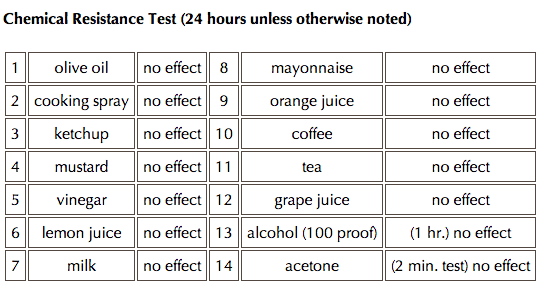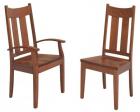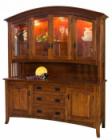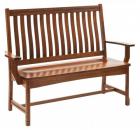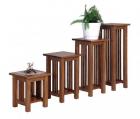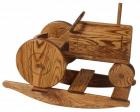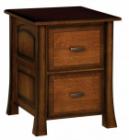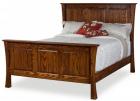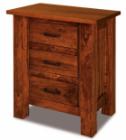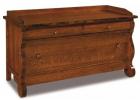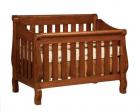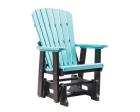Stains
Covered Bridge will customize furniture with your choice of one of our beautiful stain options. Or if you prefer an exact color match bring us a sample piece, and we will match the color for you through a lab.
Note: Due to differences in computer monitors, these pictures do not always accurately display the stain color. Come visit our store, and we will be delighted to show you the stain samples in real life.
Click on any of the images below to enlarge them.
Top Coat – What Type of Finish Is Best?
Furniture finishes come in two categories, penetrating and film.
Penetrating (oil) Finishes contain only oil and do not form a hard coating on the surface of the furniture. Instead the oil penetrates the wood, filling the cracks and defects. The oil hardens inside the wood, making the wood stronger. This type of finish allows you to feel the grain of the wood but offers less protection from water or objects that would mar the surface. We recommend maintaining the beauty of oil finish by applying oil polish twice a year. At Covered Bridge Furniture, we can offer you a quality oil polish for your hardwood furniture.
Film finishes offer superior protection and cover the wood with a clear varnish coating. They cure hard on the surface of the furniture and can be built up to the thickness you want. Because of the thickness, film finishes offer better protection from scratches, water, and water vapor than the penetrating (oil) finishes.
-
Conversion varnish is a type of film finish that “topcoats” the wood after it is stained. Benefits of conversion varnish are its excellent sealing ability and the wear quality it gives the customer. It has an excellent resistance to foods, liquids, and common household chemicals and has won superior marks in chemical resistance tests conducted by the manufacturer.
Conversion varnish is the most commonly used finish by high-end furniture makers, including most Amish furniture finishing shops. We use conversion varnish on the majority of the furniture that we sell.
Tips - How to Maintain the Beauty of Your Furniture’s Finish
Although conversion varnish offers a hard, mar-resistant surface, it may still be damaged or scratched if not taken care of properly. The luster of your furniture’s finish can be enjoyed by future generations when properly cared for.
- Choose cleaners carefully. We offer cleaners at our store that are especially designed to use on your hardwood furniture.
-
When choosing cleaners elsewhere, avoid the following ingredients.
- Do not use cleaners with abrasives because they may scratch the finish.
- Avoid cleaners containing ammonia. They may turn oak wood black and painted wood yellow.
- Do not choose cleaners containing bleach.
- Cleaners containing silicones should not be used either.
- Do not use wax on conversion varnish finishes. For oil finishes, we will be happy to sell you our special lemon oil and beeswax formula to maintain the beauty of your furniture.
- Be careful not to let wet objects with dyes or ink lie on your furniture. The dyes and ink from a wet plastic bag or newspaper may leave marks on the finish.
What Is the Difference Between Lacquers and Conversion Varnish?
Lacquer is a low quality coating that is not durable and does not resist moisture. It is commonly used on furniture today, but because of its inferiority we do not use it on any of the furniture that we sell.
Conversion varnish is a high quality coating that provides longevity and durability to your furniture.
Conversion varnish also has an excellent resistance to moisture. A cup of water left on a lacquer top overnight will leave a white ring on the finish. You can forget about a cup of water on the surface of a conversion varnish finish for a week. When you remove it, any marks that may be left on the finish will wipe off easily.
We use conversion varnish because it is durable enough to last the lifetime of your furniture.
Coating report between Lacquers and Conversion Varnish
A comparison between the two types of products. (Scale of 1 to 10.) 1 = severe effect 10 = no effect

